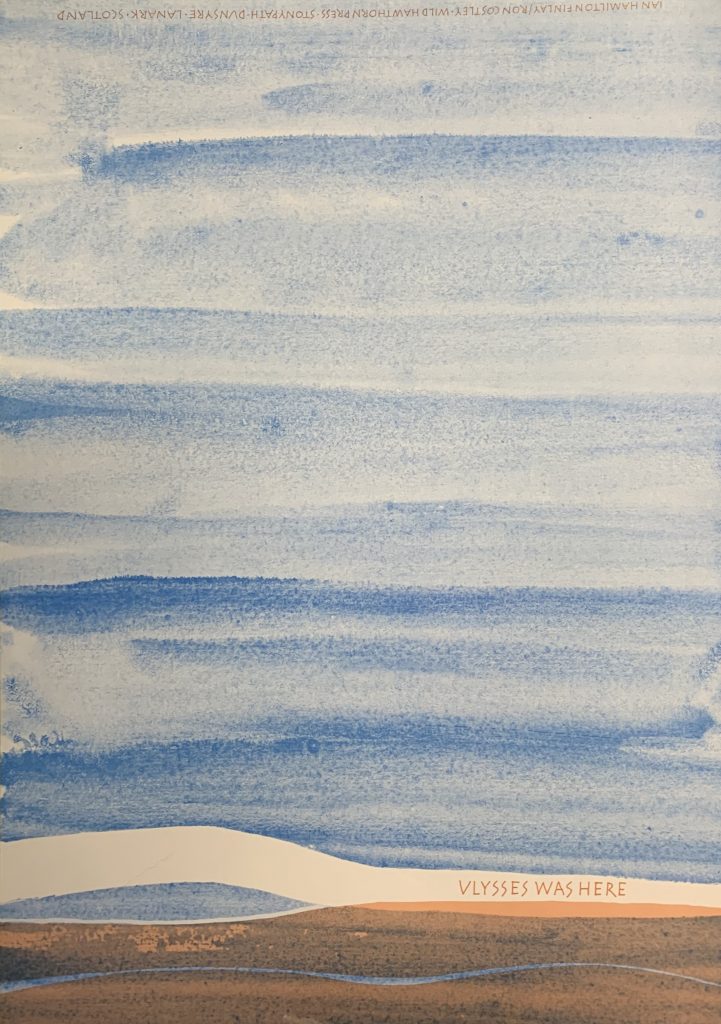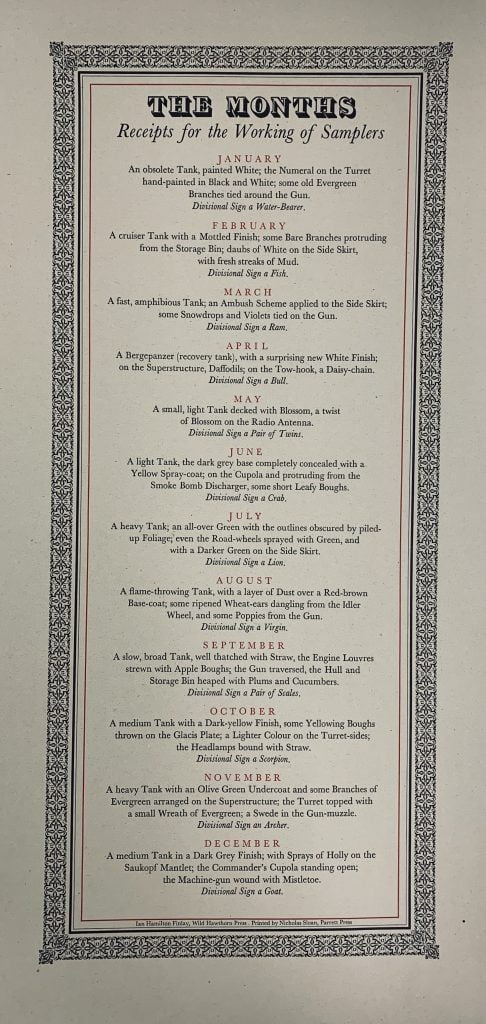THE HARBOUR AT GRAVELINES. 1978.
Little Sparta: Wild Hawthorn Press, n.d. (1978)
38 × 47.3cm, blue and black on white screen print showing a harbour at evening time by Gary Hincks in the style of pointillisme (perhaps even Seurat). The work is subtitled "in familiar mottle camouflage" - which is a humorous comment on the style and wartime attempts at disguising ships. VG condition.












